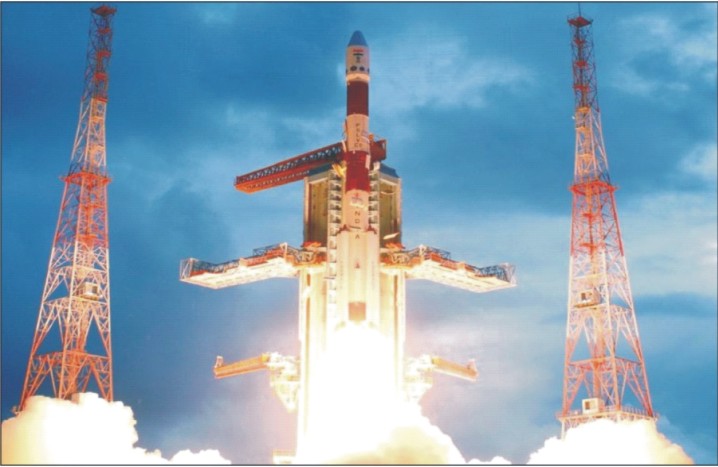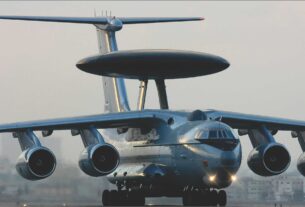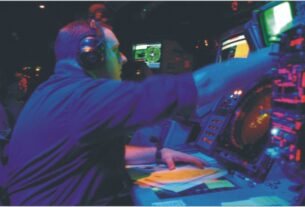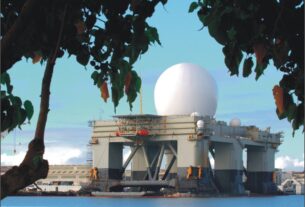Battle of spectrum
That three American helicopters could travel undetected across more than 200 km of Pakistan territory from the Parachinar border with Afghanistan to Abbottabad to reach the house in which Al Qaeda chief Osama bin Laden was killed is either an electronic miracle or the usual perfidious Pakistani behavior.
If the Pakistanis did not connive with the Americans for the prize money on Osama’s head then the US Navy SEALS’ mission to Abbottabad was a triumph of electronic warfare and the art and science of stealth technology.
The war of the airwaves is a marvel of manipulation of the electromagnetic spectrum from the ultra-high gigahertz bandwidth down to the lower scales of the millimeterwave (mmw). The use/misuse of the electromagnetic spectrum is divided into passive and active modes.
The passive mode is merely listening or reading all transmissions by radio and other means of communications (telephone/e-mail), recording radar emissions for its particular signature and the bandwidth of its transmission; direction of emission, position fixing, decoding and analysis of voice data or transmission style to identify or mark a particular person or institution that are of interest because they represent a threat.
Even as this is happening the active mode can be initiated or kept on hold till all other plans for reaching the position of the target is in place.
Countermeasures
Even as penetration of hostile airspace is underway special airborne equipment carried on both fixed wing aircraft and helicopters (airborne electronic warfare platforms) begin a game of electronic counter-measures (ECM) which include jamming of the target’s emissions with a barrage of radio-waves in a wide range of frequencies.
When that happens the target could begin what is known as electronic counter counter-measures (ECCM) by jumping frequencies or range-gating transmissions.
Thus it continues with counter-measures by both sides ranging from frequency hopping, short bursts of very fast transmissions intended to prevent interception, recoding so as to retain command of electronic intelligence (ELINT) and communications intelligence (COMINT) and be able to retaliate with pinpoint accuracy with weapons ranging from laser beams (dazzlers), directed energy weapons, and conventional weapons like missiles.
Victory comes from total control of the airwaves and electromagnetic spectrum where the enemy has been rendered both blind and deaf as during Operation Desert Storm against Iraq.
In the current context of the killing of Osama bin Laden it is inconceivable that the Pakistan armed forces-the Pakistan Air Force and the Pakistan Army-remained unaware of the penetration of their airspace by the three US helicopters.
Because the moment an intruder begins jamming, the victim knows that something is amiss and begins taking other steps to protect itself like scrambling fighter aircraft to interdict the intruder which did not happen at any time during the 40 minutes that the US marines were inside Pakistan.
It means that the Pakistan High Command knew what was to happen; that it had been told in advance not to initiate any counter-measures or it will be “bombed back into the stone age” to borrow the phrase used by President George Bush to force General Musharraf to join the war against terror in Afghanistan.
It may well be that because the Pakistanis had been forewarned that the US Navy helicopters did not need to employ electronic warfare and thereby trigger counter-measures.
The Indian Armed Forces are on the lookout for electronic warfare systems because frequent upgradation of frequency management lies at the heart of a successful military campaign. India has developed its own Samyukta electronic warfare system for management of the tactical battlefield.
It can cover and sanitize an area of 150 km in frontage and 70 km in depth and ensure that no enemy is able to jam Indian equipment even as the Indians can ensure that the enemy is not able to communicate between its echelons and the GHQ and several of its electronics-based arsenal unable to fire.
The Samyukta is a collaborative effort, perhaps the first in what is known as the public-private domain to attain successful fruition, between the Defence Research and Development Organisation’s Bharat Electronics Ltd (an acknowledged leader in electronic warfare equipment), the Corps of Signals of the Indian Army, the private sector company Computer Maintenance Corporation and the Tata affiliate the Tata Power SED.
Another 40 ancillary producers contributed components for the 145 vehicle-mounted array. Many of the collaborators were not motivated by the commercial value of the contract and made their contribution in the national interest.
It is imperative that in electronic warfare the larger portion of the equipment required must be of indigenous origin so as to be able to ensure secrecy and security of operations.
Once former President of India and one-time boss of DRDO Dr A P J Abdul Kalam said that “it is essential that the system design, architecture and deployment knowledge is generated within the country and maintained as a closely guarded information by the Services. This is essential to ensure tactical and strategic advantage for our Armed Forces during an operation”.
The Indian Army needs new electronic warfare systems for greater depth of operations and has been scouting to complement the Samyukta system. The growing applications include low-intensity conflict situations and counter-insurgency in forested areas like the ones used by the Maoists and Naxalites. A tender issued in 2006 has been updated and the process of acquisition is underway.
On the other hand the Indian Air Force too needs improved airborne electronic warfare systems, some of which will come from BEL and Hindustan Aeronautics Ltd stables but some will still have to be imported.
Indian laboratories are working on the Sangraha for the Indian Navy and the Tempest for the Indian Air Force but they need to catch up on such technologies as active electronically scanned array radars to be able to improve upon the situational awareness that would be required in the 21st century battlefield.
Raytheon has offered integrated suites comprising active electronically scanned array (AESA) radars, advanced technology forward looking infrared targeting systems and new sensor-to-weapons options that give the pilot improved situational awareness and quick-reaction capabilities.
Sweden’s SAAB too is offering its wares – electronic warfare suite for India’s advanced light helicopter – developed as a joint venture with State-owned HAL with an arrangement for joint marketing of the product.
Significantly, SAAB has revealed plans to set up a research and development hub manned by about 300 scientists and technologists in India.
EW dependency
The armed forces all over the world depend heavily on their air assets and platforms to perform every aspect of multi-spectrum operations in the ever changing modern battlefield. These assets are always vulnerable to the growing number and sophistication of air and ground-based threats.
In order to increase survivability and ensure spectrum dominance, aircrews must be trained effectively and airborne assets must be equipped with proven, effective and integrated EW systems and solutions to defend against these threats.
There should be a clear focus on denying the enemy the freedom of electronic operations and disrupt its capabilities before they can become serious threats.
Electronic Warfare has become a military discipline within itself with a pervasive i





